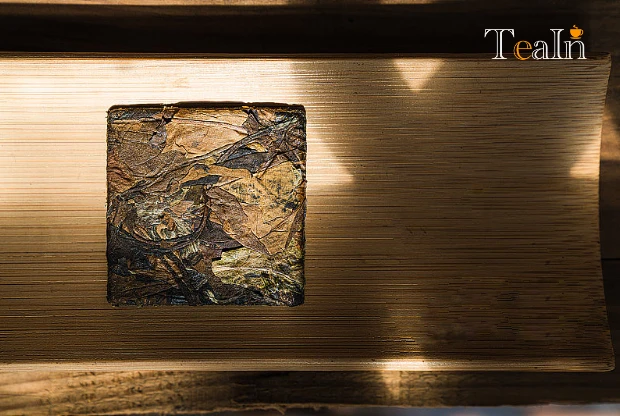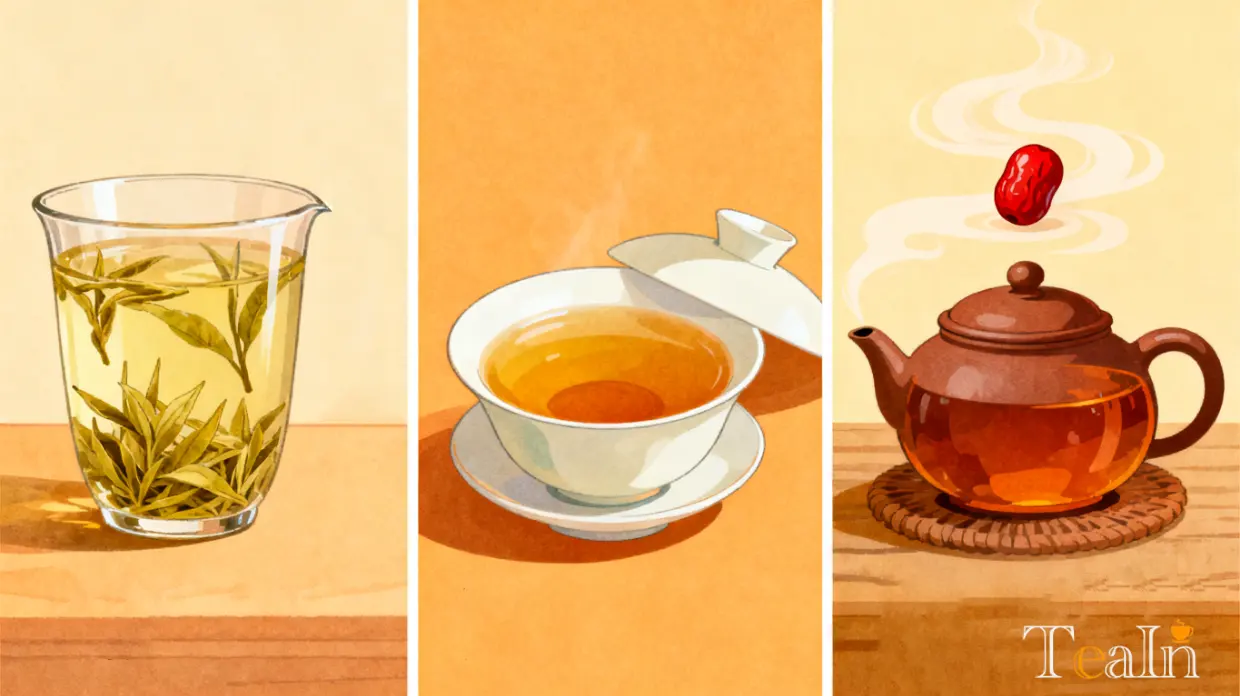Why Does the Same Batch of White Tea Taste Different?

Many tea lovers have encountered this confusion: the same batch of white tea tasted fresh, crisp, and full of downy aroma last month, but now it has a different flavor. Is the tea "spoiled," or is there another reason? In fact, flavor changes in the same batch of white tea are not necessarily a bad thing. The key is to understand the underlying causes. Today, we’ll break down three core aspects—"normal transformation," "improper storage," and "brewing mistakes"—to help you preserve the good taste of white tea and avoid the trap of off-flavors.
1. Don’t Panic First: It May Be White Tea’s "Normal Growth"
White tea has a unique trait—it improves with age. The industry saying "Tea in the first year, medicinal in the third, treasure in the seventh" vividly summarizes its natural transformation over time. If the same batch of tea tastes different, first check if it’s in a different stage of transformation.
1.1 Tea in the First Year: As Fresh as the First Taste
Freshly made white tea is a lightly fermented tea with a low fermentation degree, so its taste is close to the freshness of green tea. At this stage, the tea liquor is pale apricot-yellow, fresh and crisp on the palate, with obvious sweet aftertaste after swallowing. Its nature is slightly cool, making it suitable for drinking in summer or when you’re prone to internal heat. For new tea stored for a few months, residual moisture from processing will gradually fade, and its internal substances will start mild transformation. The taste becomes smoother than when you first bought it, with less "raw astringency" and more silkiness.
1.2 Medicinal in the Third Year: Mellow Flavor Emerges
When white tea is stored for 2-3 years, its flavor undergoes a noticeable change: the liquor color shifts from pale apricot-yellow to deep apricot-yellow, like adding a layer of warm filter; the aroma is no longer the fresh downy scent of new tea but becomes mellow, with a faint aged fragrance; the taste is smoother, losing the coolness of new tea and turning milder, which is gentler on the stomach. This happens because components like tea polyphenols and amino acids in the tea undergo slow oxidation, allowing the flavor to gradually settle.
1.3 Treasure in the Seventh Year: Richness Shows Its True Value
White tea stored for more than 5-6 years can be called "aged white tea." After long-term natural oxidation, the liquor color gradually changes from deep apricot-yellow to amber-red, looking particularly rich; the taste becomes full and heavy, not thin, leaving a long-lasting aftertaste in the mouth. Different types of aged white tea have unique aroma transformations: Silver Needle White Tea often combines downy aroma and fruity notes, with a mellow base; White Peony White Tea releases honey aroma and aged notes, with more obvious sweetness; Gongmei White Tea usually has jujube aroma, brown aroma, and even a faint herbal scent—all unique flavors endowed by time.

2. Watch Out! These "Flavors" Are "Spoilage Warnings" for White Tea
If white tea tastes off, it’s most likely due to improper storage. Distinguishing between "normal transformation" and "spoiled/off-flavored" tea is actually simple: first smell for green odor, fermented black bean smell, or musty odor. Once these smells appear, it means the tea may have spoiled—do not drink it.
White tea is "delicate" when it comes to storage. Neglecting any of these 5 points will quickly lead to off-flavors or spoilage:
2.1 Avoid High Temperatures: Room-Temperature Aging Is Safest
White tea needs to transform naturally at room temperature. High temperatures damage the active components in the tea, causing the flavor to "age prematurely" and even develop a burnt taste. For example, placing tea near heaters or stovetops will soon make the liquor thin and lose its original freshness.
2.2 Avoid Moisture: Stay Away from Moisture Sources
Tea has strong absorbency—once it comes into contact with moisture, it easily molds. When storing, be extra careful not to place tea cans near floors or ceilings, nor in high-humidity areas like bathrooms or balconies. Moisture in these areas will quietly seep into the tea, and over time, it will not only develop a musty smell but may also breed harmful substances.
2.3 Avoid Strong Light: Light-Proof Storage Protects Color
Direct sunlight or strong light causes "uncontrolled oxidation" of tea. Not only will the dry tea turn dull yellow, but the taste will also become bitter. It’s recommended to store white tea in opaque ceramic cans, tin cans, or kraft paper tea bags, and avoid placing it in transparent glass jars exposed to the sun.
2.4 Avoid Odors: Isolate "Flavor Pollutants"
Tea is like a "flavor sponge" and easily absorbs surrounding odors. For example, storing tea in the kitchen will make it absorb cooking fumes; placing it with detergents or mothballs will make it take on chemical smells; even storing it with other scented teas will cause flavor cross-contamination. It’s best to store white tea separately, away from all odorous items.
2.5 Seal Properly: Block External Interference
Sealing is the "last line of defense" for white tea storage. When using airtight cans, ensure the lid is tightly closed; if using tea bags, tie the opening tightly after each use to prevent moisture and odors from seeping in through gaps. Only with proper sealing can white tea transform slowly in a stable environment.
3. Don’t Overlook: Brewing Details Can Also Change White Tea’s Flavor
If you’ve ruled out transformation and storage issues, the different taste of the same batch of white tea may be due to brewing mistakes. The choice of water, the amount of tea leaves, and even the brewing method can all affect the taste of the liquor.
3.1 Wrong Water Spoils Good Tea
Many people are used to brewing tea with tap water, but they don’t know that tap water has high hardness and many impurities. It reacts with the components in the tea, leading to bitter liquor and weak aroma. In fact, mineral water or purified water is best for brewing white tea. These types of water have soft quality and few impurities, which can maximize the freshness and aroma of white tea.
3.2 Improper Tea Amount Ruins the Taste
Too much tea makes the liquor too strong, prone to bitterness and a numbing feeling; too little tea makes the liquor thin and tasteless, failing to bring out the flavor of white tea. Generally, when brewing with a gaiwan (100ml capacity), 3-5 grams of white tea is appropriate; if using a teapot for simmering, 5-8 grams of aged white tea per liter of water is enough. You can adjust according to your own taste.
3.3 5 Brewing Methods: Choose the Right One for Good Taste
Different brewing methods can bring out different tastes of the same batch of white tea. These 5 common methods each have their own characteristics—choosing the right scenario is important:
- Glass Brewing Method: Put white tea into a glass and brew with boiling water. Its advantage is simplicity and ease of operation, suitable for drinking alone. However, it’s not ideal for entertaining guests and fails to fully release the tea’s aroma.
- Gaiwan Brewing Method: Add tea leaves and brew with boiling water, then pour the liquor for serving. Suitable for 2-7 people, it can well stimulate the aroma of white tea. But this method requires skill—pouring the liquor too quickly results in weak aroma, while pouring too slowly makes the liquor too strong.
- Zisha Teapot Brewing Method: Zisha teapots have good heat retention, which enhances the richness of white tea. They are especially suitable for brewing aged white tea. The downside is that you can’t see the tea leaves unfurling in the water, making it hard for beginners to control the steeping time.
- Simmering Teapot Method: Simmer tea leaves with water together, turn off the heat after 1 minute, and let it steep with residual heat. Suitable for sharing with a group, simmered aged white tea has a stronger jujube or herbal aroma and rich layers. However, pay attention to the amount of tea—an improper ratio easily leads to bitterness.
- Steaming Teapot Method: This method is relatively rare. It steams the tea with a water-tea separation setup. Its advantage is that the tea can be brewed multiple times, but the liquor is relatively light with less richness, and it takes longer to prepare. It’s suitable for people who prefer light tea.
In fact, flavor changes in the same batch of white tea are not terrifying. The key is to identify the cause. If it’s normal transformation, it’s a surprise from time; if it’s due to improper storage or brewing, adjusting in time can restore the good taste. Observing and experimenting more while drinking tea not only helps you avoid off-flavors but also allows you to gradually find your favorite taste—which is part of the joy of enjoying white tea.
